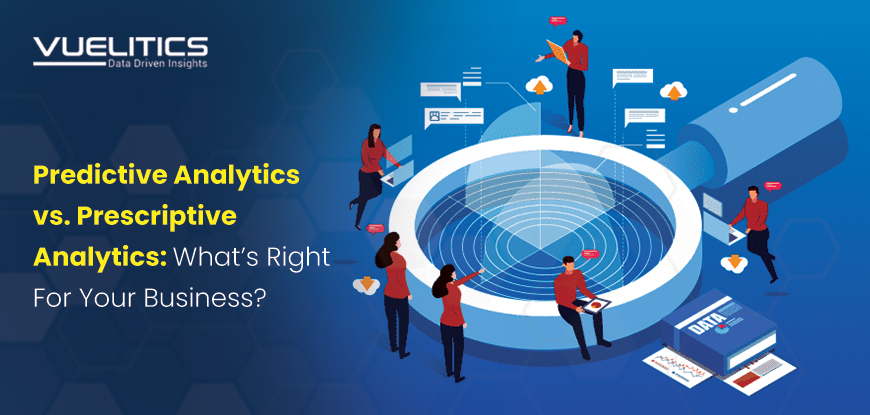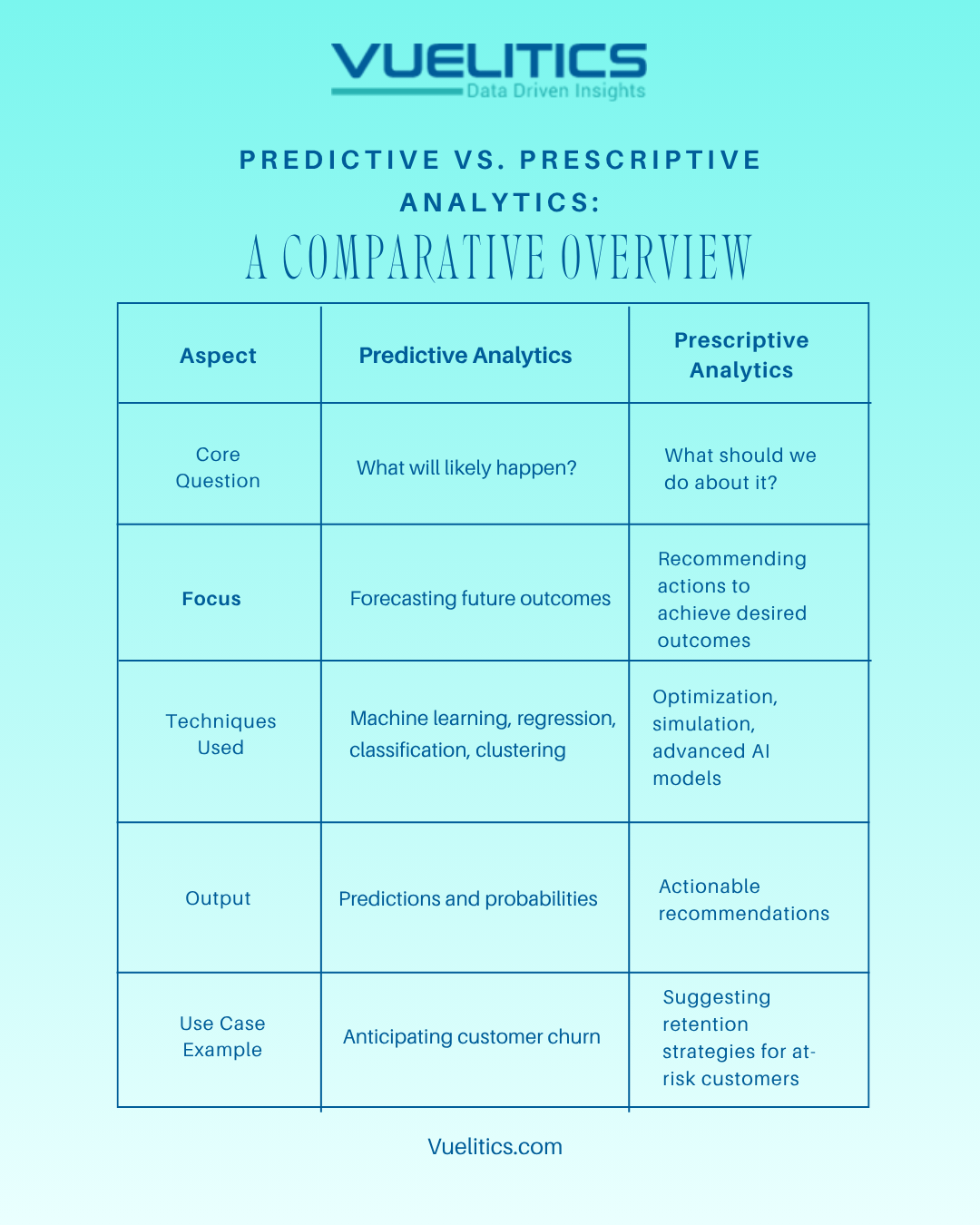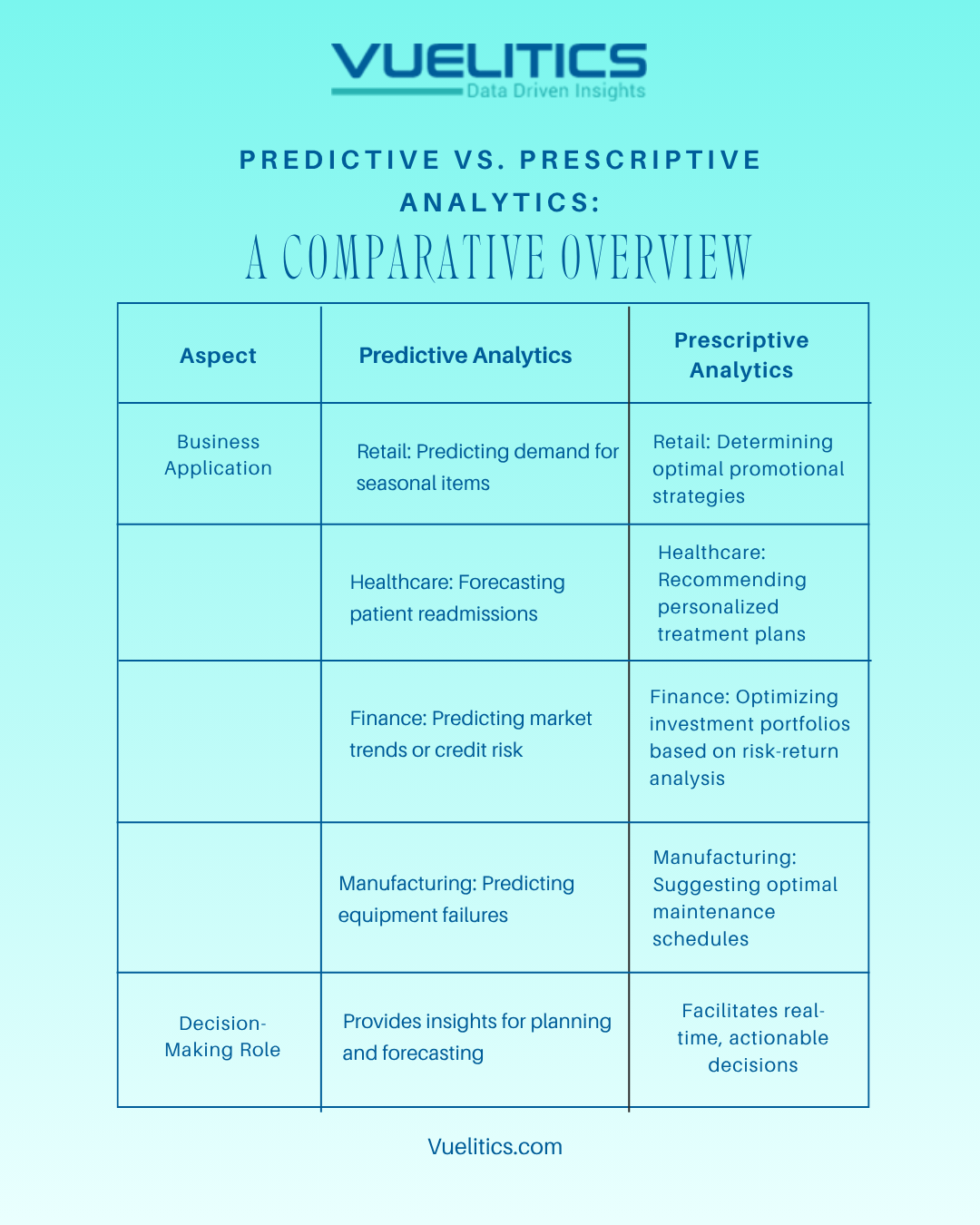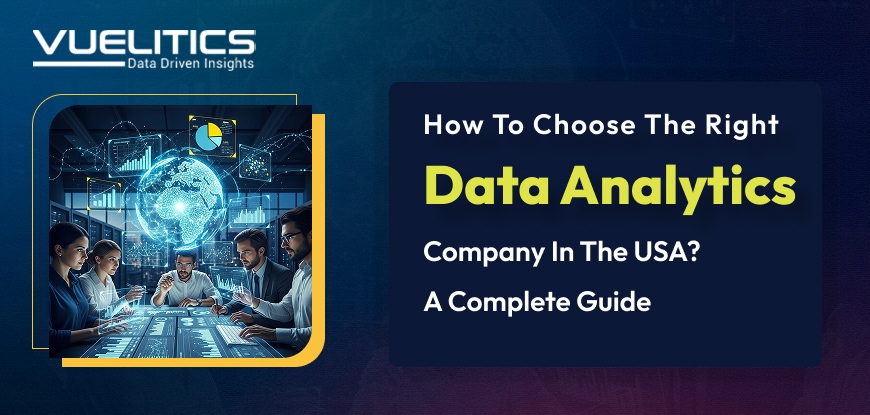- Home
- Blogs

Predictive Analytics vs. Prescriptive Analytics: What’s Right For Your Business?
Today, with data being an invaluable asset to stay ahead of the competition. From predicting consumer needs to driving efficiencies across supply chains, data analytics has become core to business strategy today. But which one is right for your organization, amid so many other terms thrown around—predictive analytics, prescriptive analytics, not to mention the grander scales of business intelligence?
This blog explains predictive analytics vs. prescriptive analytics, including their advantages, core distinctions, use cases, and how to decide what’s best for your business.
Understand the Basics: Types of Business Analytics
In order to compare predictive vs prescriptive analytics, it is actually better to understand where each of those two types fits inside the big spectrum of all analytics. There are typically four types of business analytics:
- Descriptive Analytics: Examines historical information to determine what has happened.
- Diagnostic Analytics: Explains why something happened.
- The field of predictive analytics uses past data, statistical models, and AI to foretell what might happen in the future.
- Prescriptive Analytics: Prescribes specific actions for attaining a goal, and they apply optimization algorithms & simulation, etc.
If descriptive and diagnostic analytics are about hindsight and insight, predictive and prescriptive analytics are all about foresight and decisions to take, which makes them very important for business with the help of analytics.
What are predictive analytics?
The term “predictive analytics” refers to a set of practices that use data, statistical algorithms, and machine learning methods to forecast potential outcomes by analyzing past data.
Predictive Analytics Benefits
- Better supply chain management and product-service demand forecasting.
- Improves customer retention by letting you know which clients need saving.
- Identifies fraudulent or irregular transactions.
- Aids in preventing downtime and reducing equipment maintenance.
- Ensures improved financial projects for budgeting and planning.
What are prescriptive analytics?
Prescriptive analytics takes it even one step further by recommending action based on predictive findings. The inquiry, “What should we do about it?” is addressed in it.
It employs sophisticated methods like machine learning, optimization algorithms, and simulation models to suggest the most effective actions at any given time.
Prescriptive Analytics Benefits
- Maximizes resource utilization on the operations and logistics system.
- Recommends marketing plans to support customer engagement.
- Makes pricing choices better with the help of dynamic changes.
- Aids in risk control by recommending preventive actions.
- Good for real-time decision-making in industries like logistics or health care.
Prescriptive vs. Predictive Analytics Examples
In business settings, predictive analytics helps companies predict trends so they can plan. For example, a retailer might predict which of its products will be hot during the holiday season so it can stock up on inventory.
Example of Predictive Analytics: A bank predicts which of its customers will default on a loan.
Prescriptive Analytics Example: That bank also suggests reorganizing the terms of loans or early payment options to reduce the risk.
What is the Difference Between Predictive and Prescriptive Analytics?

Both are forward-looking, but they diverge in purpose and scope:
| Aspect | Predictive Analytics | Prescriptive Analytics |
| Core Question | What will likely happen? | What should we do about it? |
| Focus | Forecasting outcomes | Recommending actions |
| Techniques | Machine learning, regression, classification, clustering | Optimization, simulation, advanced AI models |
| Output | Predictions and probabilities | Actionable recommendations |
| Use Case | Anticipating customer churn | Suggesting retention strategies for at-risk customers |
Predictive vs. Prescriptive Analysis: The line of prediction vs. recommendation Predictive shows what’s possible; prescriptive tells you the best thing to do.
Use Cases for Predictive Analytics vs. Prescriptive Analytics

There are use cases that make sense for each analytics approach in a real-world, enterprise context:
How Businesses Use Predictive Analytics?
- Retail: Predicting demand of seasonal items.
- Healthcare: Predicting patient readmissions.
- Finance: Predicting market movement or credit risk.
- Manufacturing: Predicting machine failures.
How Businesses Use Prescriptive Analytics?
- Retail: The best promotions for customers.
- Health care: Recommending treatments based on the needs of the patient.
- Finance: determining risk and return in their portfolio.
- Manufacturing: Suggesting optimal production schedules.
These predictive vs. prescriptive data analytics use cases demonstrate that, while predictive insights tell “what could happen,” prescriptive insights inform businesses about how to choose “what to do next.”
Predictive vs. Prescriptive Analytics for Decision Making
For business analytics decision-making, there is validity in each method:
- The predictive analytics offers insights for planning and eliminates the ambiguity in that process.
- Prescriptive analytics is about action, ensuring that companies do the most effective thing possible on their journey to get where they are going.
For instance, an airline might use predictive analytics to predict future flight delays caused by weather. Prescriptive analytics then assists in reassigning crew shifts and reaccommodating passengers effectively.
Predictive vs. Prescriptive: Making It Work for Your Company
Which method to choose depends on your business objectives, data maturity level, and number of resources you have.
Choose Predictive Analytics If:
- Your company is starting its analytics adventure.
- You have to be aware of trends and future potentials. You value planning, not advice to be taken on immediately.
Choose Prescriptive Analytics If:
- You have predictive insights and are, as of now, in desperate need of actionable strategies.
- You need to make life-and-death decisions in real time, every day on the line.
- Your target is complex processes or resources.
For most companies, the ideal approach requires a mix of predictive and prescriptive analytics, where predictions drive future states and prescriptive insights suggest what to do.
Final Thoughts
The debate between predictive analytics and prescriptive analytics isn’t about which is better, but rather about which is appropriate for your stage and goals of the business. Predictive analytics is great for gaining valuable foresight, but prescriptive analytics ensures that you act on those insights in the best way, given such scenarios.
By differentiating between predictive and prescriptive analytics and by integrating the two with your business strategy, they can turn data into smarter decisions, increased efficiencies, and lasting growth.
FAQ
What are predictive analytics?
Predictive analytics applies data, statistics, and machine learning to predict future outcomes and trends.
What are prescriptive analytics?
Prescriptive analytics tells you the best course of action to take given desired results, and optimization/simulation are its key tools.
What distinguishes prescriptive analytics from predictive analytics?
Predictive analytics is what will happen, and prescriptive analytics is what you should do about it.
Is it possible for a company to use predictive and prescriptive analytics?
Yes. A lot of businesses use both to predict results and then optimize actions based on those predictions.
What is better for business decision-making—predictive vs. prescriptive analytics?
There is no right or wrong besides the right times for one and the other: predictive offers vision, while prescriptive guarantees movement. The appropriate selection depends on your company’s needs and maturity in data analytics.



Post Comments